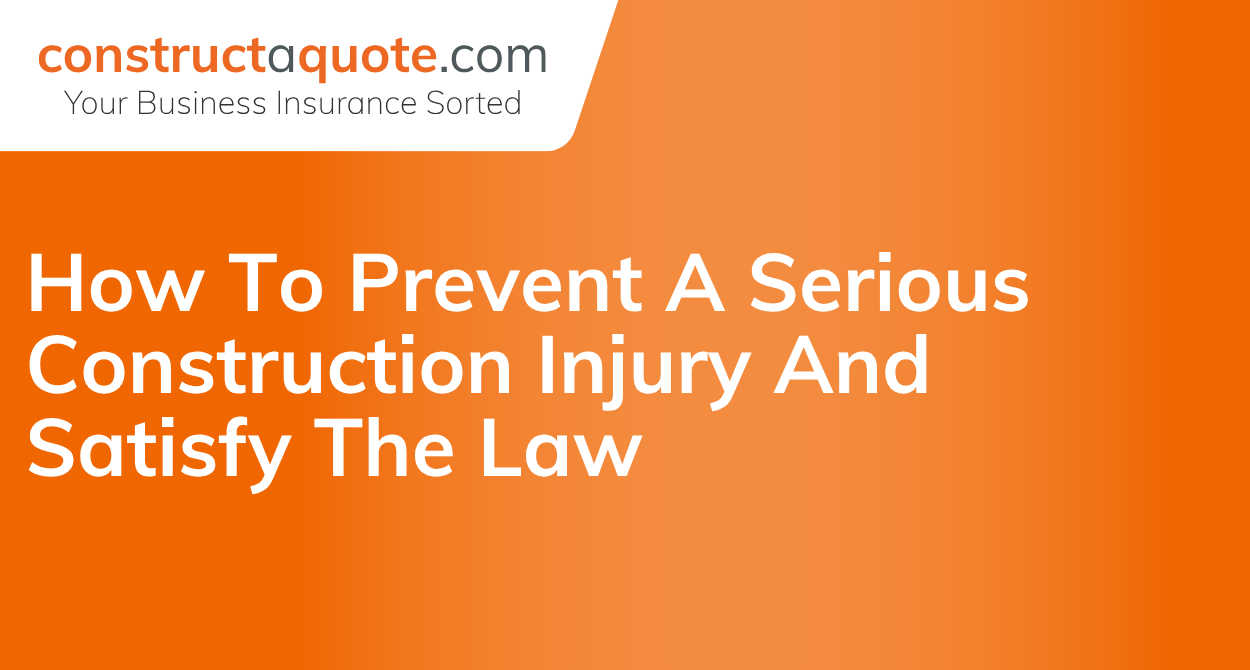by constructaquote - 27 March 2017


Regarded as one of the most dangerous careers, construction work can be extremely high risk.
The Health and Safety Executive (HSE) estimated 66,000 workers self-reported non-fatal workplace injuries in 2016.
Leading safety hazards on construction include: 23% slips, 20% falls, 11% struck by objects, 22% lifting and handling – all four of these hazards have caused grievous injuries and in extreme cases death.
Between 2015 and 2016 approximately 43 construction workers were fatally injured according to HSE.
With 79,000 cases of self-reported work related illness including 18% experiencing depression or anxiety, 64% suffering from musculoskeletal disorders (MSDs).
Working in construction environments can worsen health conditions such as back pain, stress, asthma, and other musculoskeletal disorders.
With the most frequent causes of serious injury at work being slips, trips and falls from a height.
Working at Height
Working at a height is one of the biggest causes of fatalities and serious injuries. The most common cause of body trauma, resulting from ladder falls, roof falls and through fatalities surfaces.
When working from heights, you must have the necessary precautions in place. Making sure all work is correctly planned, supervised and carried out by skilled workers with industry knowledge.
Minimise the consequences of a fall, by using the right type of equipment where the risk cannot be eliminate.
Do:
Don’t:
Slips and Trips
Slips and trips cause over a third of all severe injuries and can contribute to other types of accidents.
Slips and Trips also account for half of all reported injuries to members of the public in workplaces, where there is public access, such as hospitals, retailers, and restaurants.
Preventive measures are often as simple as a basic assessment to identify what you can do to tackle slips and trips risks. Most accidents occur when floors become wet, contaminated or spillage.
Do:
Don’t:
Health and safety management should be a routine part of managing your work environment. Employers must use the right precautions to reduce the risks of workplace dangers.
The Law
The main law governing the workplace is the Health and Safety at Work Act 1974, which sets legal duties that provide a safe working environment.
“Proving a safety workplace must be a prominent aspect of management. As an employer, it is really important to satisfying the law – by taking a risk assessment that you must do under the Management of Health and Safety at Work Regulations 1999”.
For more information, checkout our FREE Ultimate Guide To Public Liability and our FREE Ultimate Guide To Employer’s Liability.

by Charlotte Houghton - 7 October 2020
by constructaquote - 6 October 2020
by Charlotte Houghton - 29 September 2020
by Charlotte Houghton - 24 September 2020